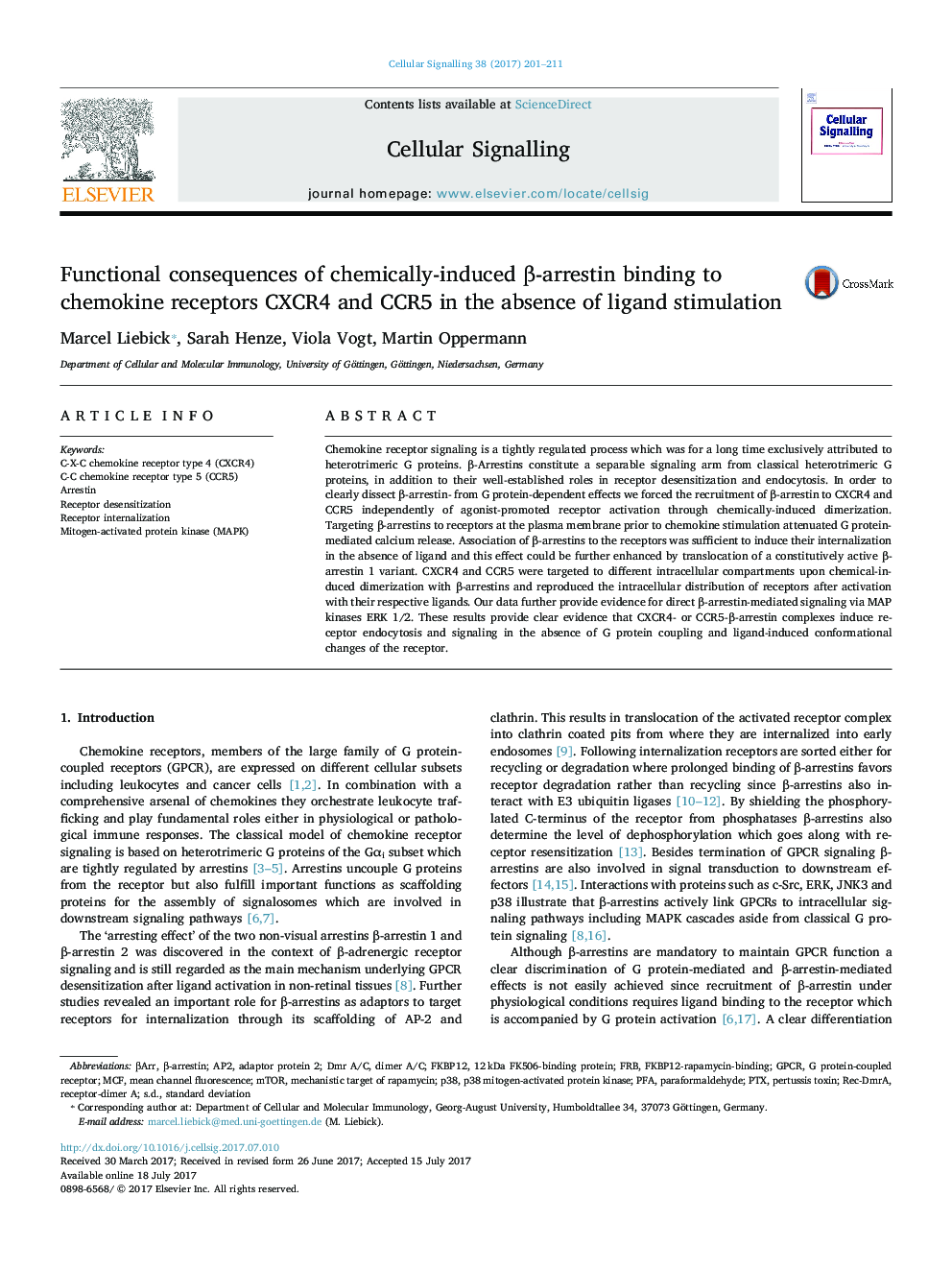| Article ID | Journal | Published Year | Pages | File Type |
|---|---|---|---|---|
| 5509330 | Cellular Signalling | 2017 | 11 Pages |
â¢Î²-Arrestin translocation in absence of agonist stimulation mediates receptor desensitization and internalization.â¢Î²-Arrestin-mediated internalization mimics the intracellular distribution of receptors after agonist stimulation.â¢Î²-Arrestin mediates ERK activation in the absence of G proteins.â¢Conformational changes of β-arrestin are relevant for receptor endocytosis.
Chemokine receptor signaling is a tightly regulated process which was for a long time exclusively attributed to heterotrimeric G proteins. β-Arrestins constitute a separable signaling arm from classical heterotrimeric G proteins, in addition to their well-established roles in receptor desensitization and endocytosis. In order to clearly dissect β-arrestin- from G protein-dependent effects we forced the recruitment of β-arrestin to CXCR4 and CCR5 independently of agonist-promoted receptor activation through chemically-induced dimerization. Targeting β-arrestins to receptors at the plasma membrane prior to chemokine stimulation attenuated G protein-mediated calcium release. Association of β-arrestins to the receptors was sufficient to induce their internalization in the absence of ligand and this effect could be further enhanced by translocation of a constitutively active β-arrestin 1 variant. CXCR4 and CCR5 were targeted to different intracellular compartments upon chemical-induced dimerization with β-arrestins and reproduced the intracellular distribution of receptors after activation with their respective ligands. Our data further provide evidence for direct β-arrestin-mediated signaling via MAP kinases ERK 1/2. These results provide clear evidence that CXCR4- or CCR5-β-arrestin complexes induce receptor endocytosis and signaling in the absence of G protein coupling and ligand-induced conformational changes of the receptor.
